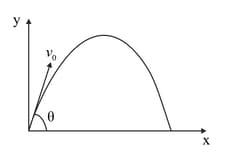G L Mittal and TARUN MITTAL Solutions for Chapter: Rotational Motion of a Rigid Body : Moment of Inertia, Exercise 3: FOR DIFFERENT COMPETITIVE EXAMINATIONS
G L Mittal Physics Solutions for Exercise - G L Mittal and TARUN MITTAL Solutions for Chapter: Rotational Motion of a Rigid Body : Moment of Inertia, Exercise 3: FOR DIFFERENT COMPETITIVE EXAMINATIONS
Attempt the practice questions on Chapter 14: Rotational Motion of a Rigid Body : Moment of Inertia, Exercise 3: FOR DIFFERENT COMPETITIVE EXAMINATIONS with hints and solutions to strengthen your understanding. ISC Physics Class XI Part 1 solutions are prepared by Experienced Embibe Experts.
Questions from G L Mittal and TARUN MITTAL Solutions for Chapter: Rotational Motion of a Rigid Body : Moment of Inertia, Exercise 3: FOR DIFFERENT COMPETITIVE EXAMINATIONS with Hints & Solutions
The dancer on ice spins faster when she folds her arms. This is due to
A thin circular ring of mass M and radius is rotating about its axis with a constant angular velocity . Two objects, each of mass , are attached gently to the opposite ends of the diameter of the ring. The wheel now rotates with an angular velocity
A thin ring of mass is rolling without slipping on a horizontal plane with velocity . A small ball of mass , moving with velocity in the opposite direction, hits the ring at a height of and goes vertically up with velocity immediately after the collision, choose the correct statement :
A mass hangs with help of a string wrapped around a pulley on a frictionless bearing. The pulley has mass and radius . Assuming pulley to be a perfect uniform circular disc, the acceleration of the mass, if the string does not slip on the pulley, is:
A solid cylinder of mass and radius s free to rotate about the horizontal axis. A massless string is wound round the cylinder with one end attached to it and other end hanging freely. Tension in the string required to produce an angular acceleration of is:
The ratio of the accelerations for a solid sphere rolling down an incline of angle without slipping, and slipping down the incline without rolling is
A round uniform body of radius , mass and moment of inertia rolls down (without slipping) an inclined plane making an angle theta with the horizontal. Then its acceleration
A small particle of mass m is projected at an angle with the x-axis with an initial velocity in the x-y plane as shown in the figure. At a time, the angular momentum of the particle is


